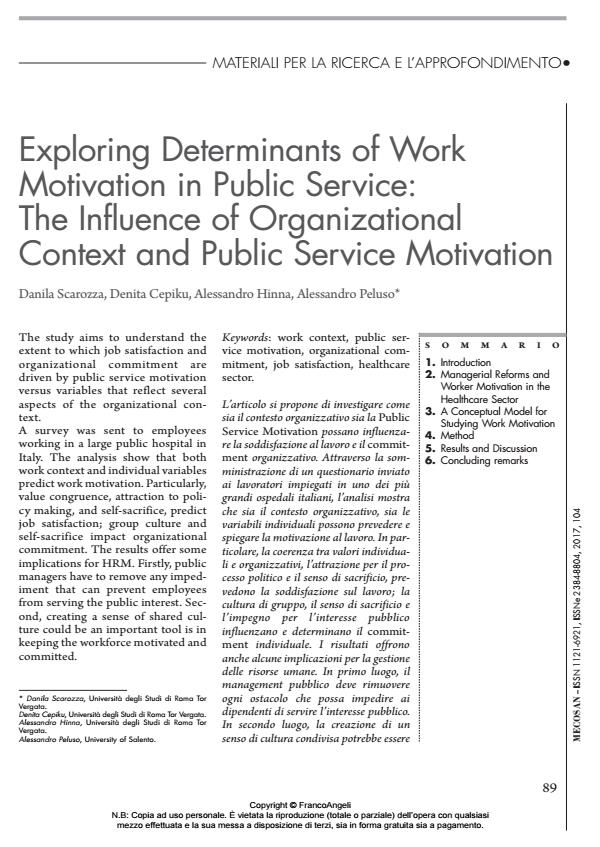Exploring Determinants of Work Motivation in Public Service: The Influence of Organizational Context and Public Service Motivation
Titolo Rivista MECOSAN
Autori/Curatori Danila Scarozza, Denita Cepiku, Alessandro Hinna, Alessandro Peluso
Anno di pubblicazione 2018 Fascicolo 2017/104
Lingua Italiano Numero pagine 21 P. 89-109 Dimensione file 23767 KB
DOI 10.3280/MESA2017-104006
Il DOI è il codice a barre della proprietà intellettuale: per saperne di più
clicca qui
Qui sotto puoi vedere in anteprima la prima pagina di questo articolo.
Se questo articolo ti interessa, lo puoi acquistare (e scaricare in formato pdf) seguendo le facili indicazioni per acquistare il download credit. Acquista Download Credits per scaricare questo Articolo in formato PDF

FrancoAngeli è membro della Publishers International Linking Association, Inc (PILA)associazione indipendente e non profit per facilitare (attraverso i servizi tecnologici implementati da CrossRef.org) l’accesso degli studiosi ai contenuti digitali nelle pubblicazioni professionali e scientifiche
The study aims to understand the extent to which job satisfaction and organizational commitment are driven by public service motivation versus variables that reflect several aspects of the organizational context. A survey was sent to employees working in a large public hospital in Italy. The analysis show that both work context and individual variables predict work motivation. Particularly, value congruence, attraction to policy making, and self-sacrifice, predict job satisfaction; group culture and self-sacrifice impact organizational commitment. The results offer some implications for HRM. Firstly, public managers have to remove any impediment that can prevent employees from serving the public interest. Second, creating a sense of shared culture could be an important tool is in keeping the workforce motivated and committed.
Parole chiave:Contesto organizzativo; Public Service Motivation, Soddisfazione al lavoro, sanità, commitment organizzativo.
Danila Scarozza, Denita Cepiku, Alessandro Hinna, Alessandro Peluso, Exploring Determinants of Work Motivation in Public Service: The Influence of Organizational Context and Public Service Motivation in "MECOSAN" 104/2017, pp 89-109, DOI: 10.3280/MESA2017-104006